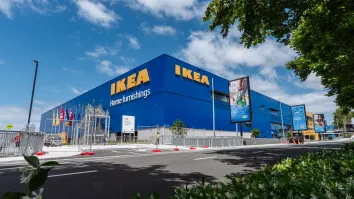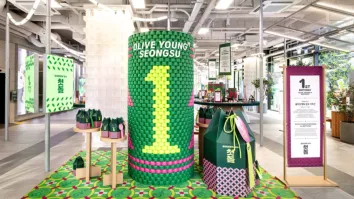How has COVID transformed the grocery sector?
By Yuval Ben-ItzhakThe COVID-19 pandemic has had a profound impact on all facets of life, the grocery and retail sector included. Consumers have increased their online interactions with retailers and brands and will continue to do so long after the pandemic is over.
Grocery retailers have had to adapt to fulfil new customer demands as well as navigate a complex and constantly changing operating environment. At first, with the hospitality industry closed and lockdowns, people were eating more at home, and coupled with the safety concerns of heading out, many also had a preference to get goods delivered. We all saw a run on shops and panic buying, and an everyday shopper was enlisting the services of multiple grocery stores, from your local mom-and-pop stores to the bigger supermarket chains.
This led to massive growth in the online grocery sector, increasing nearly three times in Southeast Asia according to Facebook & Bain & Company[1]. While, online grocery platform HappyFresh saw a growth factor of 10-20 times in 2020 across Indonesia, Malaysia, and Thailand[2].
The e-Conomy SEA 2020 report indicates that shoppers are buying more groceries online and it’s here to stay; 47% of online grocery shoppers in Southeast Asia are new and 76% plan to continue shopping this way[3]. As online shoppers in the region are expected to reach 380 million by 2026, this trend is set to increase. Retailers are in an advantageous position to tap into this growing market opportunity. Beyond going digital, retailers need to create unique, customised customer experiences to meet changing customer demands and thrive in the new normal.
Standing Out Among the Rest
The retailers that have been the most successful are those that provide a unique experience to their consumers. This includes traditional in-store shopping, online shopping, click-and-collect, scan-and-shop, no minimum spend, plus the ability to include other items such as pharmaceuticals, electronics, household items, and clothes. There has also been a rise in the variety of delivery options from ‘next day delivery’ to ‘same day delivery’ by supermarket chains like Fairprice, Cold Storage, Giant and Tesco. Meanwhile, online grocery platforms like HappyFresh and Lazada’s RedMart offer even faster turnaround times with options to deliver within an hour or two. The gig economy has facilitated this type of commerce, with a spike in people working in gig jobs to enable this new trend.
Customers want to engage with brands on their own terms, channels, and devices. Those that can offer a seamless customer journey, with flexibility and convenience will build loyalty with their consumers.
Brands often debate how much effort, time, and financial investment they should commit to digital and social media marketing. Understanding relevant personas is key, and if you don’t understand your audience and the content they find engaging then you won’t get value and results out of digital marketing.
We’ve seen a shift in focus from traditional advertising to social media advertising on platforms such as Facebook, Instagram, and Twitter. Especially if you’re a small local grocer, butcher, fishmonger, fresh food store - social media can really help you grow. SMEs are often constrained by resources and budgets when it comes to prioritising marketing activities. However, we see more and more SMEs investing in social media marketing as a means of engaging and growing their customer base, as well as building brand awareness. According to the ASEAN SME Transformation Survey 2020, 58% of SMEs in the region included adopting a digital marketing strategy as a priority during the pandemic, utilising social media as part of that[4]. Social media was cited as the top online activity in Southeast Asia, and 60% of consumers[5] in the region use it for discovering new brands and products.
Aside from digital and social media marketing, grocers will need to invest and update their technology. Chatbots can provide 24/7 support and answer simple queries quickly, for example, if a customer wants to know if a certain product is available, how to use the shopping cart or search function on the website, or the status of their delivery. This frees up customer care agents for more complex issues and can reduce wait times when needing to speak to a live agent. There is also the opportunity for grocers to use chatbots and AI more creatively, such as providing nutrition advice, useful recipes, alternative products, daily deals, competitions, and so forth.
While the future of grocery shopping will continue to evolve and change, the importance of a great customer experience from marketing right through to post-purchase care will remain paramount.
[1] https://www.facebook.com/business/news/digital-consumer-trends-next-normal-southeast-asia
[2] https://techwireasia.com/2021/08/rise-in-sea-online-shoppers-fuelling-growth-of-e-grocery-platform-happyfresh/
[3] https://www.bain.com/globalassets/noindex/2020/e_conomy_sea_2020_report.pdf
[4] https://financialservicesblog.accenture.com/wp-content/uploads/2020/09/ASEAN_SME_Transformation_Study_2020.pdf
[5] https://www.bain.com/insights/digital-consumers-of-tomorrow-here-today/




















 Advertise
Advertise






